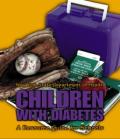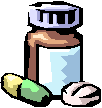DOH Medicaid Update November 2002 Vol. 17, No. 11
Office of Medicaid Management
DOH Medicaid Update
November 2002 Vol.17, No.11
State of New York
George E. Pataki, Governor
Department of Health
Antonia C. Novello, M.D., M.P.H., Dr. P.H.
Commissioner
Medicaid Update
is a monthly publication of the
New York State Department of Health,
Office of Medicaid Management,
14th Floor, Room 1466,
Corning Tower, Albany,
New York 12237
Table of Contents
Initiative For Children With Diabetes
Key Indicators For Diagnosis Of Asthma
eMedNY Implementation Is Here
Additional HIV Test Covered
Recap Of Mandatory Generic Drug Program
MEDICAID PAYMENT ACCURACY MEASUREMENT (PAM)
DEMONSTRATION PROJECT
The Office of Medicaid Management has received a grant from the Centers for Medicare and Medicaid Services (CMS) to participate in the CMS Medicaid Payment Accuracy Measurement (PAM) Project.
The goals of this project are:
- To assist states in developing PAM methodologies;
- Conduct pilot tests of alternative approaches; and,
- Explore the feasibility of estimating payment accuracy for the Medicaid program at the national level.
An essential part of this project will consist of a review of a sample of Medicaid claims and the corresponding medical records.
Beginning in November 2002, the Department's contractor, Island Peer Review Organization, will contact providers to obtain medical records for the services contained in the sample.
If you are contacted, please cooperate and respond timely to our request. This will facilitate the review and minimize the need for multiple contacts with the providers in the sample.
Questions regarding this article should be directed to Payment Accuracy Measurement Project staff at (518) 474-9328.

The Governor's Initiative for Children with Diabetes, which addresses the needs of school children, their families, and caregivers at school, was born after the Governor's State of the State Address on January 6, 1996. A workgroup was formed to provide expertise and guidance to this project. Workgroup partners consisted of teachers, coaches, school nurses, children with diabetes and their parents, diabetes educators and staff from the American Diabetes Association and Juvenile Diabetes Foundation.
As a result of the Governor's Initiative, two manuals were prepared:
- Children with Diabetes, A Resource Guide for Schools and
- Children with Diabetes, A Resource Guide for Families of Children with Diabetes
The manuals include diabetes facts and information specifically tailored for children and young adults, parents of children with diabetes, practitioners, and school nurses. The manuals have been widely distributed throughout New York State.
The project also provided for Statewide training of school nurses on the most recent clinical and treatment information available for the management of children with diabetes. Over 2,500 school nurses attended the training, which was jointly sponsored by the Departments of Health and Education.
Lastly, the Governor's Initiative provided funding for four demonstration projects to be conducted specifically for children with diabetes. The purpose of these projects is to:
- Improve the availability and quality of diabetes care and information for school aged children, their families and appropriate school personnel; and,
- Look at base line and trend data regarding primary and tertiary healthcare use, school attendance and quality of life factors to help determine the effectiveness of early interventions.
You may contact the projects for information about diabetes and the programs they conduct. Agency names, addresses and telephone numbers are as follows:
Community Coalition for Care & Prevention of
Diabetes in Children
Children's Hosp. at Strong Memorial Hosp.
University of Rochester, Rochester, City School District
(716) 275-1542
Community Initiative for Children with Diabetes,
Diabetes Education Program of Northeast Health & Ellis Hospital
(518) 447-3501
The Diabetes Initiative for School Children in the
Neighborhood of East Harlem-DISNEH
Mount Sinai school of Medicine
(212) 241-2000
School to Community Partnership for Diabetes
Awareness and Management
Gowanda Central School District
(716) 523-3325

The school and family resource guides and the Diabetes Control Program Publication Form is on the NYSDOH web site at:
http://www.health.state.ny.us/diseases/conditions/diabetes/families.htm
http://www.health.state.ny.us/diseases/conditions/diabetes/schools.htm
Or you may call the Diabetes Control Program at (518) 474-1222.
The NYS Medicaid Program reimburses for medically necessary care, services & supplies for the diagnosis & treatment of diabetes. For more information, please call the Bureau of Program Guidance at (518) 474-9219.
Key Indicators For Diagnosis Of Asthma
Return to Table of Contents
Asthma is a chronic disease which has shown striking increases in incidence and prevalence. Making the correct diagnosis of asthma is extremely important. Clinical judgment is required because signs and symptoms vary widely from patient to patient as well as within each patient over time. To address this major public health concern, the National Institutes of Health's National Heart, Lung and Blood Institute published "Guidelines for the Diagnosis and Management of Asthma ". The guidelines include a summary of key indicators for considering a diagnosis of asthma.
As presented by the Expert Panel Report II, the clinician trying to establish a diagnosis of asthma should determine that:
- episode symptoms of airflow obstruction are present.
- airflow obstruction is at least partially reversible.
- alternative diagnoses are excluded.
A careful medical history, physical examination, pulmonary function tests, and additional tests should provide the information needed to ensure a correct diagnosis of asthma.
Summary of Key Indicators for Considering a Diagnosis of Asthma
Consider asthma and performing spirometry if any of the following indicators are present.
These indicators are not diagnostic by themselves, but the presence of multiple key indicators increase the probability of a diagnosis of asthma.
Spirometry is needed to establish a diagnosis of asthma.
- Wheezing-high pitched whistling sounds when breathing out-especially in children.
(Lack of wheezing and a normal chest examination do not exclude asthma.) - History of any of the following:
- Cough, worse particularly at night
- Recurrent wheeze
- Recurrent difficulty in breathing
- Recurrent chest tightness
- Reversible airflow limitation and diurnal variation as measured by using a peak flow meter, for example:
Peak expiratory flow (PEF) varies 20% or more from PEF measurement on arising in the morning (before taking an inhaled short-acting beta2-agonist) to PEF measurement in the early afternoon (after taking an inhaled short-acting beta2-agonist).
Symptoms occur or worsen in the presence of:
| Viral Infections | Exercise | Mold | Pollen |
| House-dust mites | Animal with Fur or Feathers | Changes in the weather | |
| Strong Emotional Expression | Airborne Chemical or Dust | Menses | |
| Symptoms occur or worsen at night, awakening the patient | |||
*Eczema, hay fever, or a family history of asthma or atopic diseases is often associated with asthma, but they are not key indicators.
Additional asthma information is available on the following web sites:
National Asthma Education & Prevention Program
New York State Department of Health
http://www.nhlbi.nih.gov
http://www.health.state.ny.us/diseases/asthma/index.htm
The NYS Medicaid Program reimburses for medically necessary care, services & supplies for the diagnosis & treatment of asthma. For more information, please call the Bureau of Program Guidance at (518) 474-9219.
eMedNY IMPLEMENTATION IS HERE
PHARMACY PROVIDERS AND EMEVS USERS
Return to Table of Contents
The New York State Department of Health (DOH) is scheduled to implement the first phase of eMedNY, the new Medicaid computer system that is consolidating the Medicaid Management Information System MMIS) and the Electronic Medicaid Eligibility Verification System (EMEVS). EMedNY will be operated by Computer Sciences Corporation (CSC).
Phase I of eMedNY, the Medicaid Eligibility Verification Systems (MEVS), replaces the functionality currently provided by EMEVS. The transition to MEVS is scheduled for the weekend of November 16, 2002.
The consolidation and modernization of operations under eMedNY are designed to offer enhanced features for providers interacting with the Medicaid program while ensuring a smooth transition with minimal impact on providers.
eMedNY ENHANCEMENTS
ONLINE CLAIM ADJUDICATION
eMedNY will provide electronic claim capture and online adjudication. During Phase I, the eMedNY system will perform full online adjudication for electronic pharmacy claims only and return an immediate claim status response. This will allow pharmacy providers to determine if their claims were approved for final payment at the time of submission. In the second phase of eMedNY, online claim adjudication capability will be extended to other provider types.
Special Notice to Pharmacies: Please be aware that the explanation of the Formulary Price in the NCPDP Message Field, as it appeared in a September 10, 2002 provider letter to pharmacies, has been reversed as a result of concerns raised by the pharmacy community. The eMedNY system's NCPDP Message Field (504) will contain the same information as previously returned, which is the maximum reimbursable unit price amount from the New York State Drug File. The dispensing fee is not involved in the calculation of this amount.
PHARMACY PROVIDERS WHO BILL VIA PAPER OR MAGNETIC MEDIA
With implementation of Phase I of eMedNY, the Department will enhance and complete prescribing provider license editing. Specifically, edits 1237 (Prescriber License Not On NYS License File), and 1243 (Prescribing Provider Not In Active Status on Date of Service) will be activated for claims filed on paper and via magnetic media (tape and diskette). These edits correspond to MEVS response codes 068 Invalid Ordering Provider) and 318 (Prescribing Provider License Not In Active Status), which will continue to be issued for claims submitted via electronic capture. Consult your Pharmacy Provider Manual and Medicaid Update articles featuring license editing for information regarding proper use and entry of prescribing provider license numbers.
eMedNY WEB SITE
The eMedNY web site features will include general Medicaid news, notifications to providers, frequently asked questions and answers, formulary file information, disqualified/deceased provider list, posting provider list, fraud alerts, the MEVS Provider Manual, the ProDUR/ECCA Provider Manual, CSC and DOH contact information, and the Medicaid Eligibility Field Software (downloadable).
The web site also will provide links to the New York State Department of Health web site and to the New York State Department of Education web site for license verification. The web site address is:www.emedny.org.
TRANSITION
eMedNY MEVS has been designed to facilitate a smooth, efficient transition from the EMEVS. Although some changes have been necessary (mostly related to the pharmacy online claim adjudication), most providers will not be required to change any of their current procedures to interact with the new system.
The DOH and CSC have conducted numerous tests to ensure a successful transition on the weekend of November 16th. However, in the unlikely event that the eMedNY MEVS does not function properly due to a transition failure and providers are unable to verify a recipient's eligibility, the Department is confident that, as a provider and a responsible member of the health care delivery community, you will provide Medicaid recipients with any medically necessary essential service. If a Medicaid provider is unable to provide a medically necessary service, the patient should be referred to the nearest hospital or emergency room.
MEVS ACCESS METHODS AND TELEPHONE NUMBERS
eMedNY MEVS users will be able to access the system through the same methods and telephone numbers that they currently use. They are:
| Access Method | Primary Phone Number | Backup Phone Number |
| ARU (Telephone) | (800) 997-1111 | (800) 225-3040 |
| POS Terminals/PC (Low Speed) | (800) 997-1119 | (800) 394-2345 |
| PC Dial-Up (High Speed) | (800) 997-1110 | (800) 394-4858 |
The eMedNY MEVS will be operational 24 hours a day, seven days a week.
PROVIDER SERVICES
CSC's eMedNY Provider Services will provide telephone support for inquiries related to eMedNY MEVS transactions, pharmacy claims, connectivity, POS terminals, and software. During Phase I, CSC will retain the same telephone number that is currently used for EMEVS inquiries:
(800) 343-9000
Beginning November 17, 2002, CSC's Provider Services business hours for MEVS inquiries will be Monday through Friday from 7:00 a.m. to 10:00 p.m. and Saturdays, Sundays and holidays from 8:30 a.m. to 5:30 p.m. After these hours, providers may still call Provider Services for emergency inquiries.
NOTE: For inquiries related to MMIS (billing assistance and claim processing-related questions), all providers (except for pharmacies) should continue calling CSC's Provider Relations current toll-free numbers (as listed below) Monday through Friday from 9:00 a.m. to 5:00 p.m.
Institutional Services (800) 522-1892 or (518) 447-9810
Practitioner Services (800) 522-5518 or (518) 447-9860
Professional Services (800) 522-5535 or (518) 447-9830
LABORATORY PROVIDERS
MEDICAID NOW COVERS ADDITIONAL HIV TESTING
PAYMENT ALLOWED FOR FDA APPROVED bDNA HIV VIRAL LOAD TEST
Return to Table of Contents
Effective for dates of service on or after September 11, 2002, laboratory providers may claim reimbursement for HIV viral load testing performed using the VERSANT HIV-1 RNA 3.0 Assay (bDNA) (Bayer corporation). This test has recently been approved by the FDA. Therefore, it is now eligible for Medicaid reimbursement using the existing code and fee for HIV viral load tests.
Laboratories should use MMIS procedure code 87536 when billing for HIV viral load. The maximum reimbursable amount for code 87536 is $117.59.
HIV viral load testing is a covered service when clinically indicated, up to a maximum of six viral load tests per 12-month period per patient. Medicaid will reimburse for only one HIV viral load test per patient encounter.
Laboratories, Designated AIDS Centers, residential health care facilities and ordering practitioners are reminded of the following payment policies applicable to all laboratory testing, including HIV drug resistance testing:
- Laboratories may not bill for a test performed while a patient is in hospital inpatient status. Medicaid payment to the hospital includes all necessary laboratory services.
- All ordered HIV viral load tests are reimbursable fee-for-service directly to the testing laboratory. This includes tests ordered for:
- inpatients of Article 28 residential healthcare facilities;
- patients of Designated AIDS Centers operating under the Tier AIDS payment structure; and,
- patients of Article 28 certified outpatient clinics.
- Medicaid regulation requires that:
- payment be made to the provider actually performing the test unless the reference laboratory and the forwarding laboratory are "subsidiary related" (see June 2002 Medicaid Update, page 15); and that
- only Medicaid-enrolled clinical laboratories with Department of Health approval to perform HIV viral load testing are entitled to reimbursement.
If you have further questions on coverage for HIV viral load tests, please contact Bureau of Policy Development and Agency Relations staff at (518) 473-2160.
Medicaid Mandatory Generic Drug Program
Recap
Return to Table of Contents

Beginning November 17, 2002, most brand-name drugs with a generic equivalent will require a prior authorization to be covered by the Medicaid program.
A special edition of the Medicaid Update devoted to the Mandatory Generic Drug program was mailed to providers in mid-October. This edition provides prior authorization information, patient education information, commonly asked questions and the necessary documents to guide providers through this program.
If you did not receive the special edition of the Medicaid Update, it may be accessed at the Department of Health's web site at: www.health.state.ny.us, click on "Information for Providers", then "Medicaid", then "Medicaid Update".
Highlights of the Mandatory Generic Program:

- Generic drugs do not require prior authorization. Only brand-name drugs with an A-rated generic equivalent require prior authorization.
- A voice interactive telephonic system is utilized to obtain prior authorizations necessary for brand-name drugs.
- Prescriptions for brand-name drugs will continue to require "DAW" and "Brand (Medically) Necessary" on the prescription in the prescriber's own handwriting in addition to the prior authorization number obtained for that prescription.
Reminder: A generic drug is identical, or bioequivalent, to a brand-name drug in dosage form, safety, strength, route of administration, quality, performance characteristics and intended use . The New York State Medicaid program encourages providers to use generic drugs whenever possible.
For more information on this program, contact the Pharmacy Policy and Operations Staff at (518) 486-3209.
The Medicaid Update: Your Window Into The Medicaid Program
The State Department of Health welcomes your comments or suggestions regarding the Medicaid Update.
Please send suggestions to the editor, Timothy Perry-Coon:
NYS Department of HealthOffice of Medicaid Management
Bureau of Program Guidance
99 Washington Ave., Suite 720
Albany, NY 12210
(e-mail MedicaidUpdate@health.state.ny.us )
The Medicaid Update, along with past issues of the Medicaid Update, can be accessed online at the New York State Department of Health web site: http://www.health.state.ny.us/health_care/medicaid/program/main.htm
